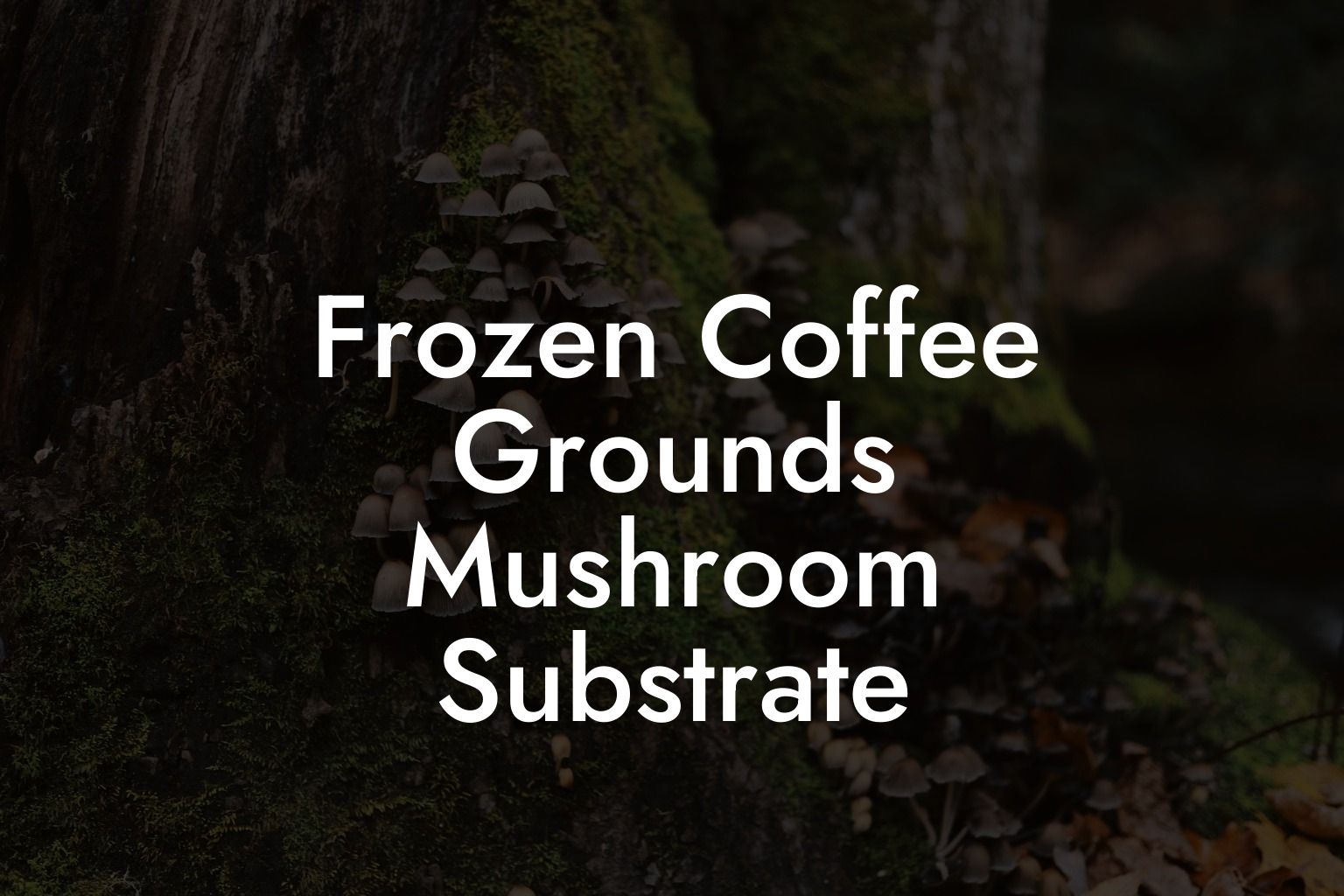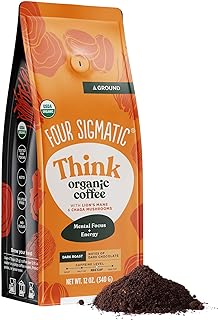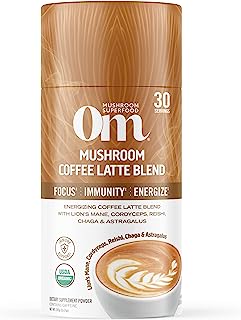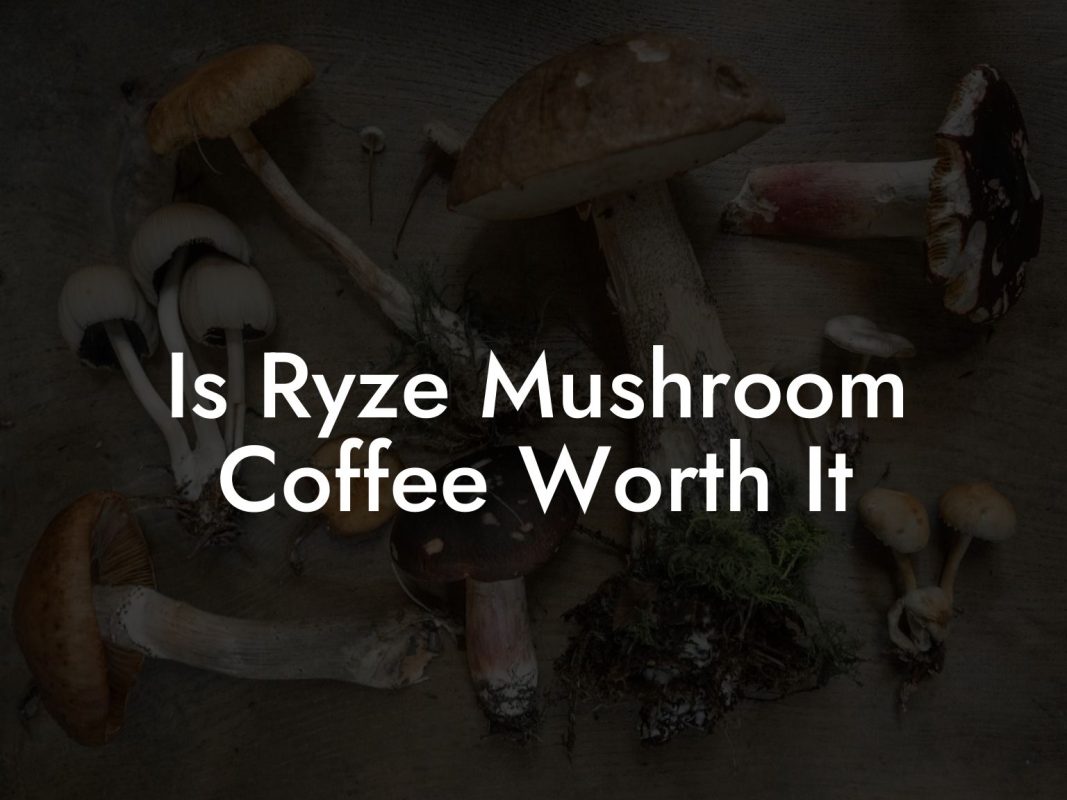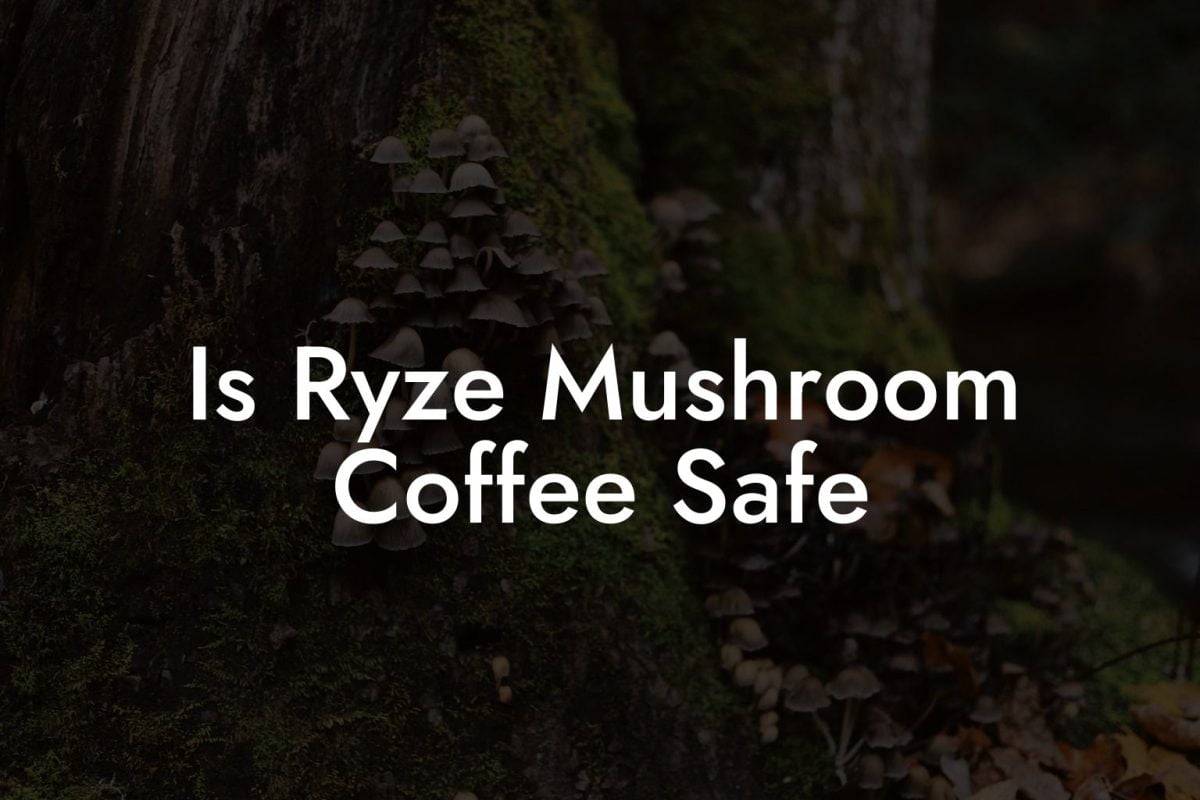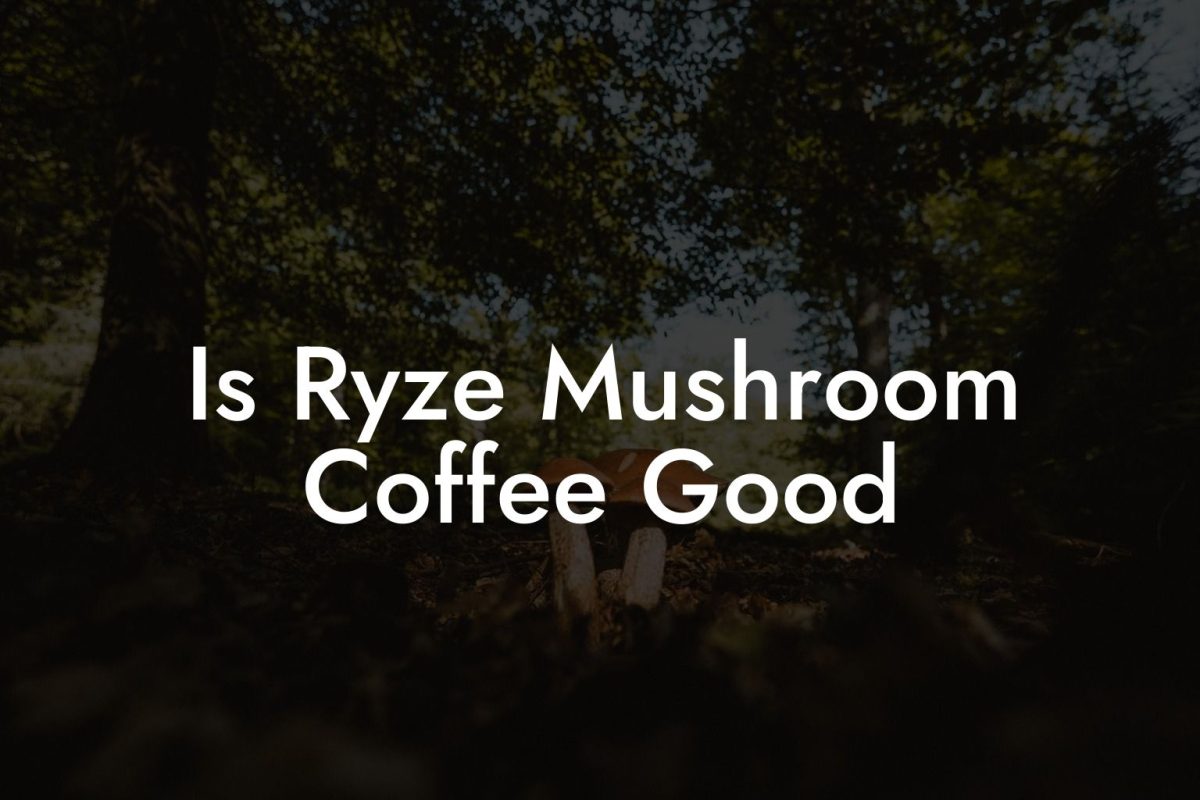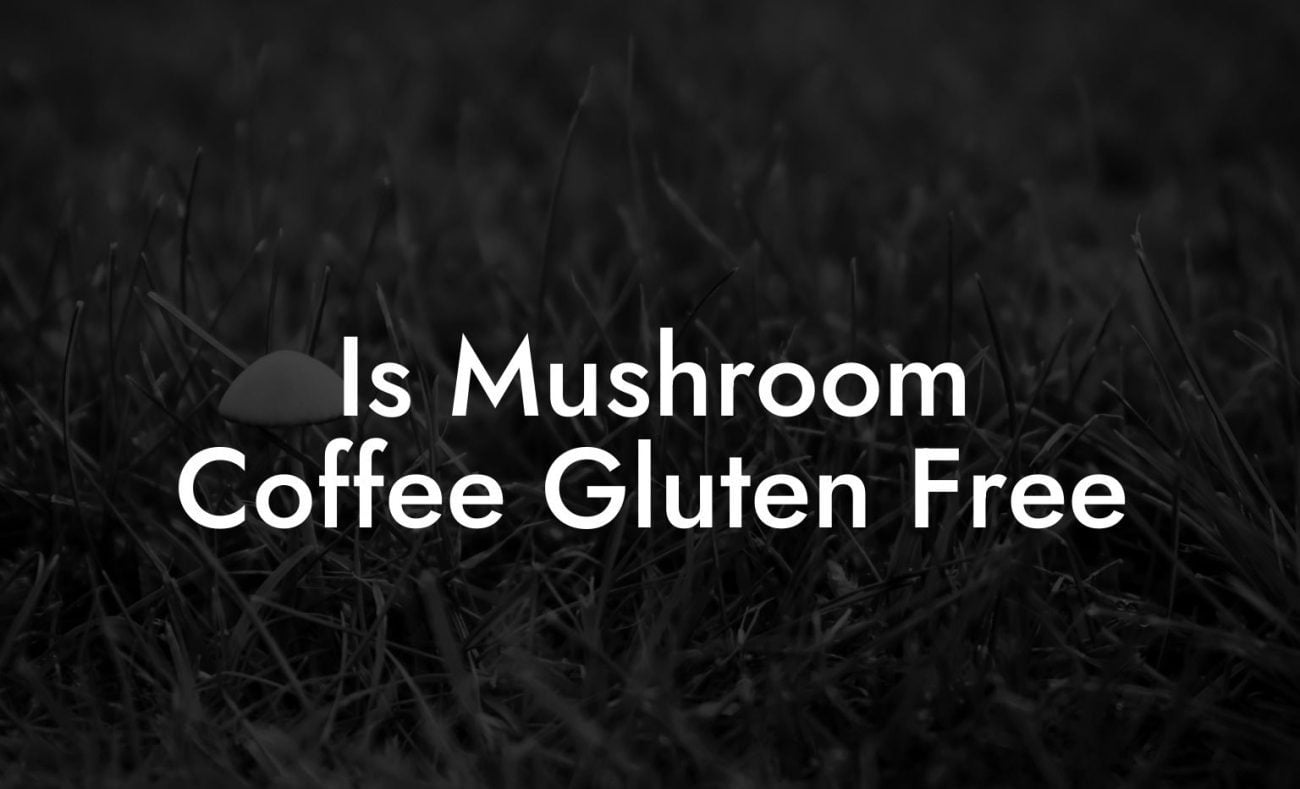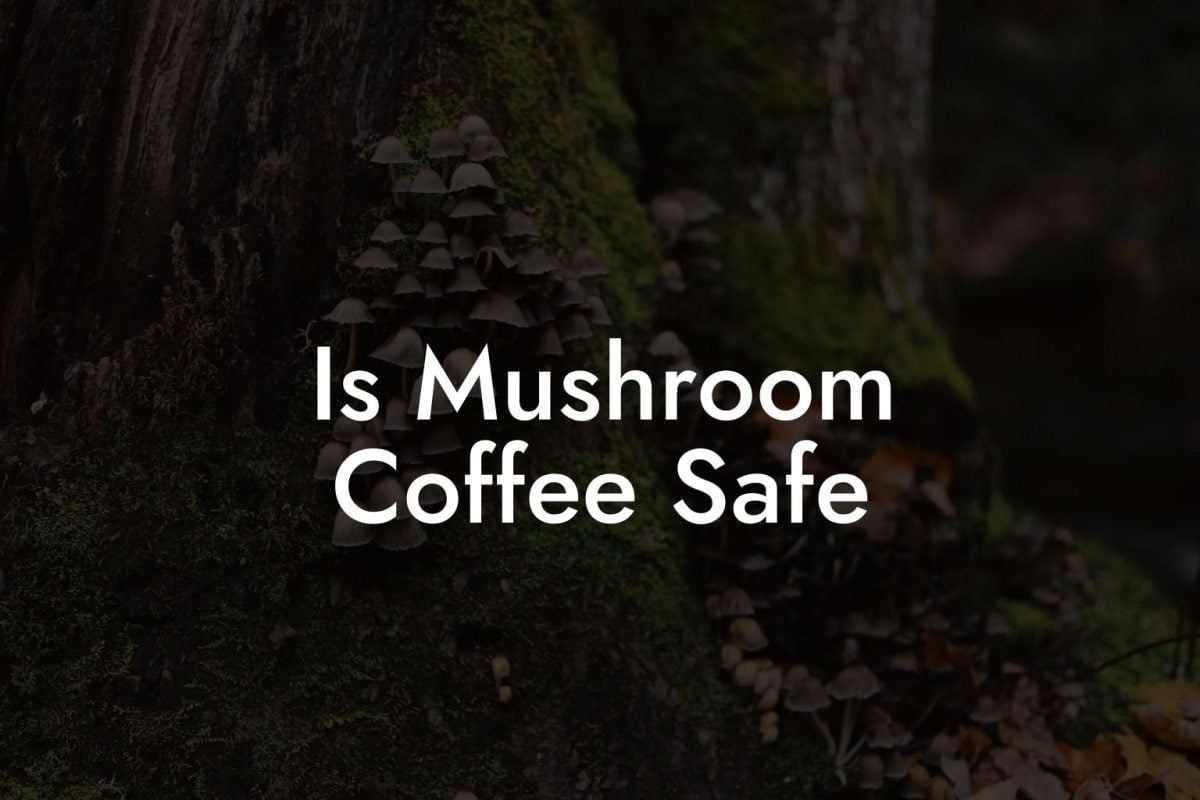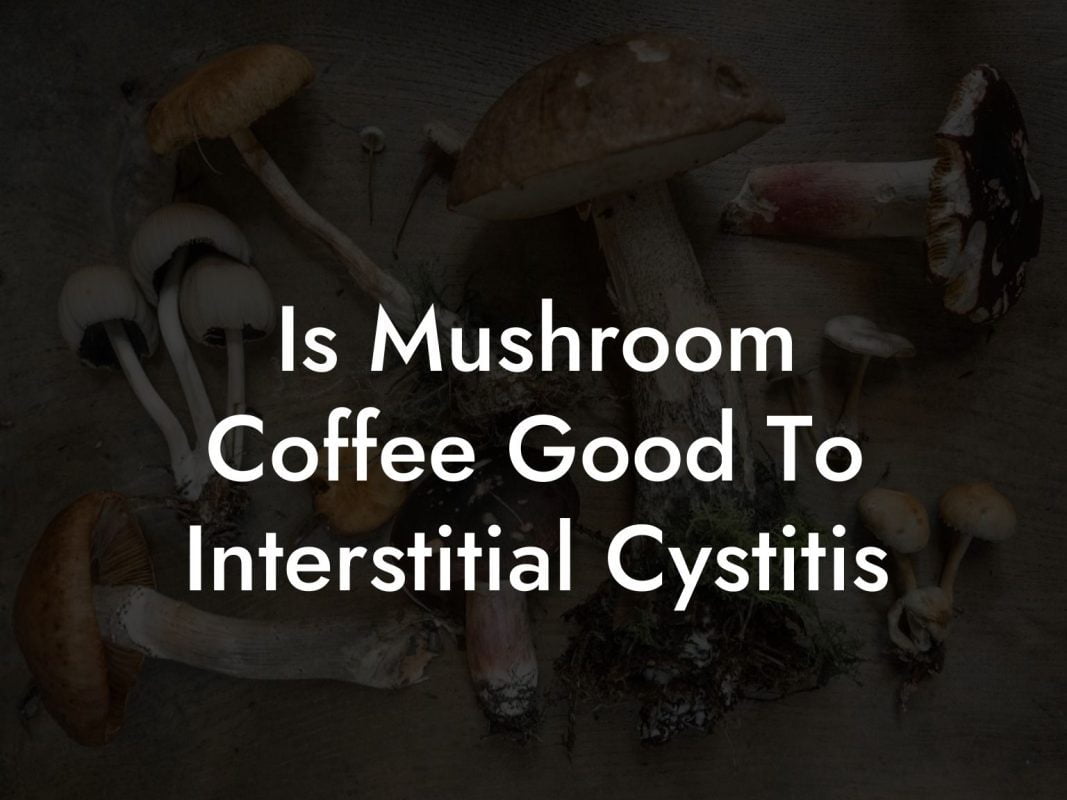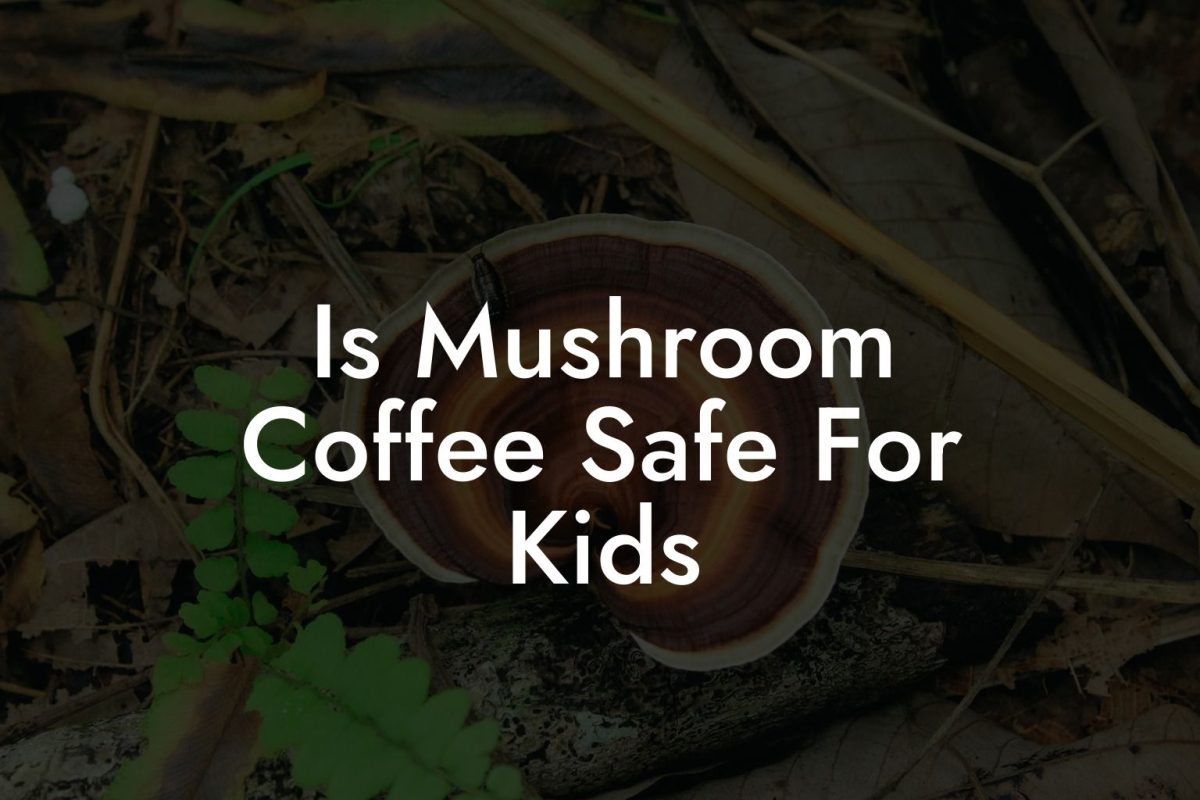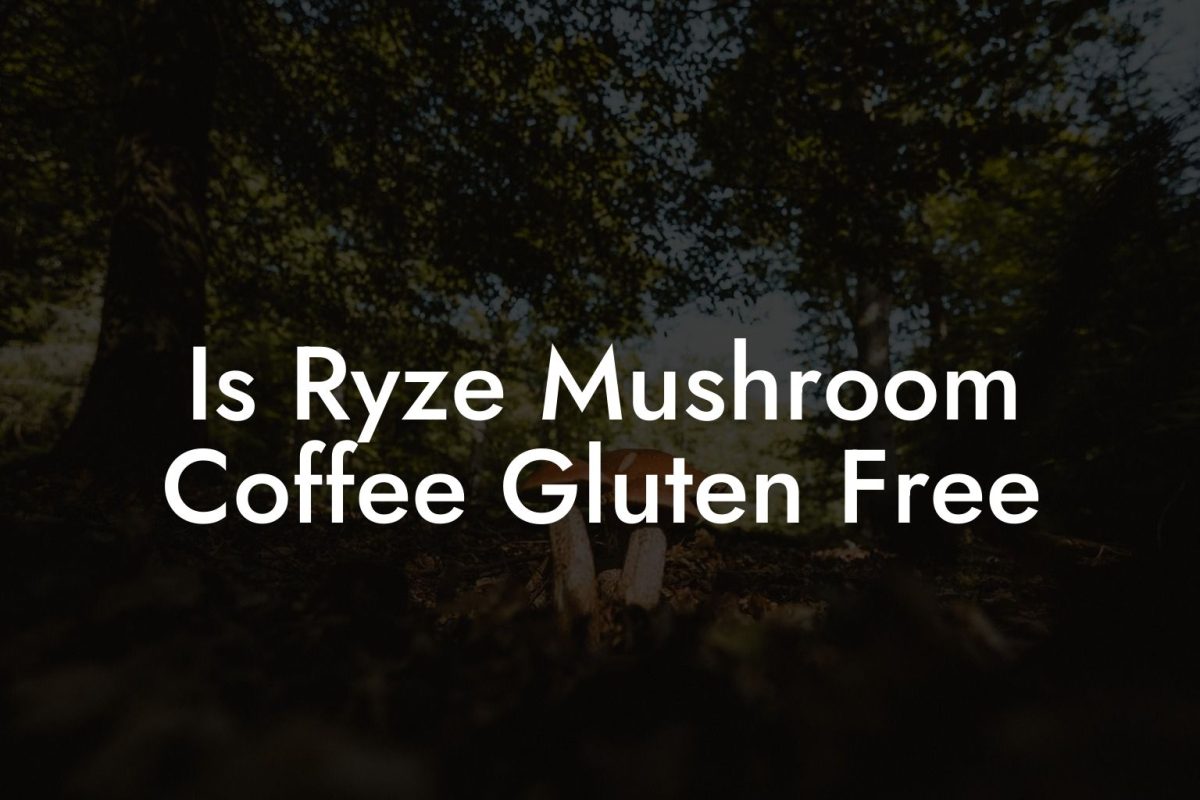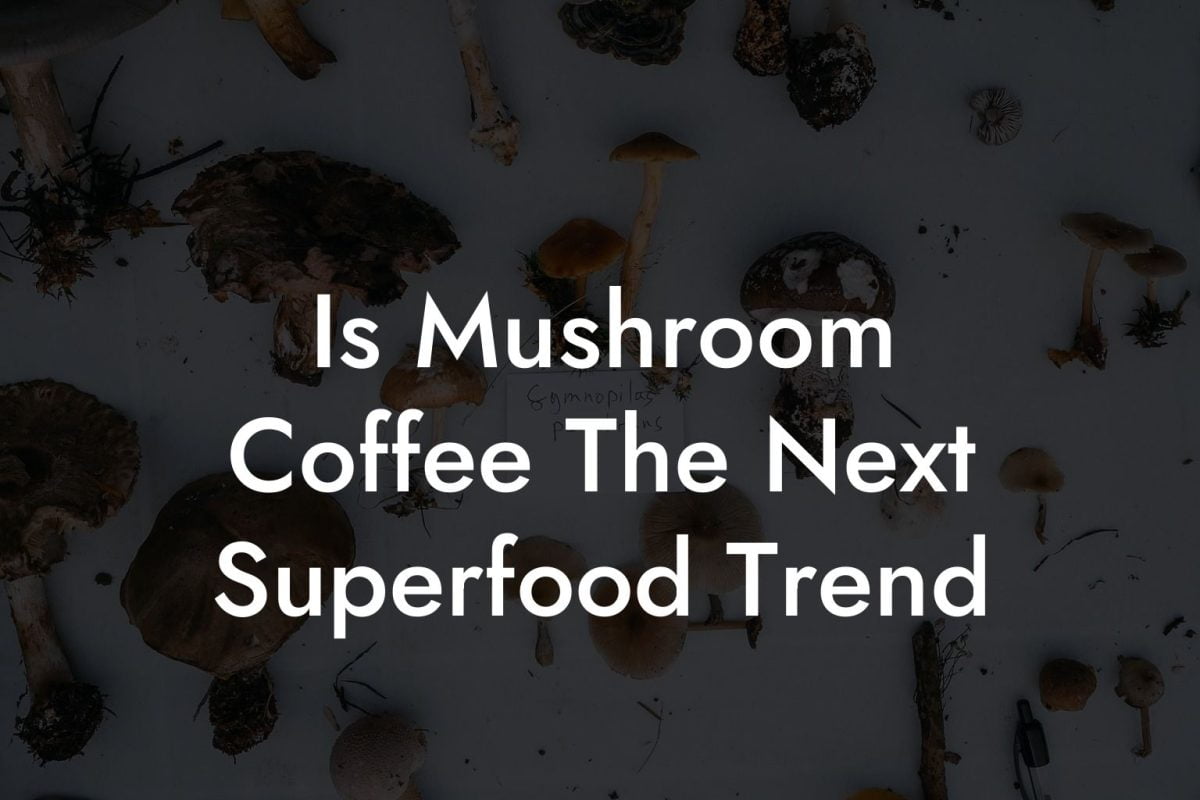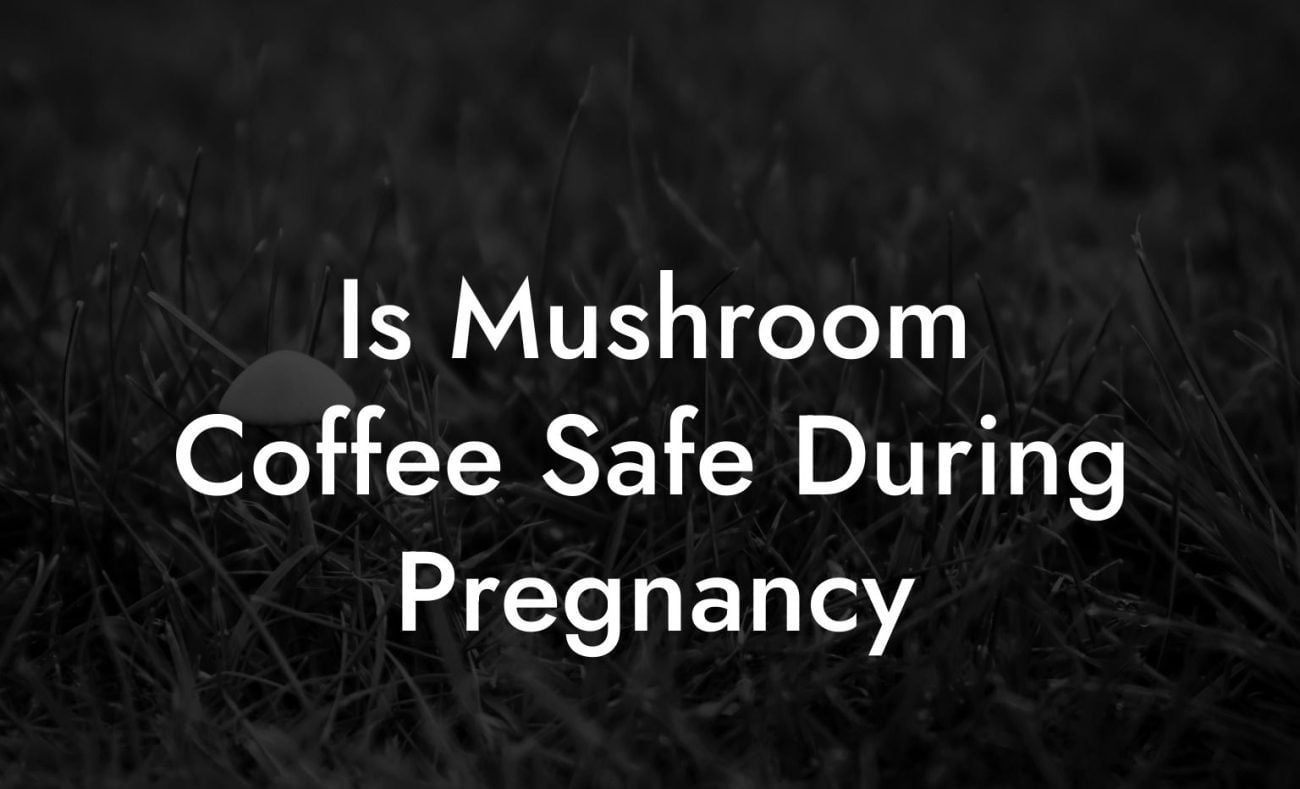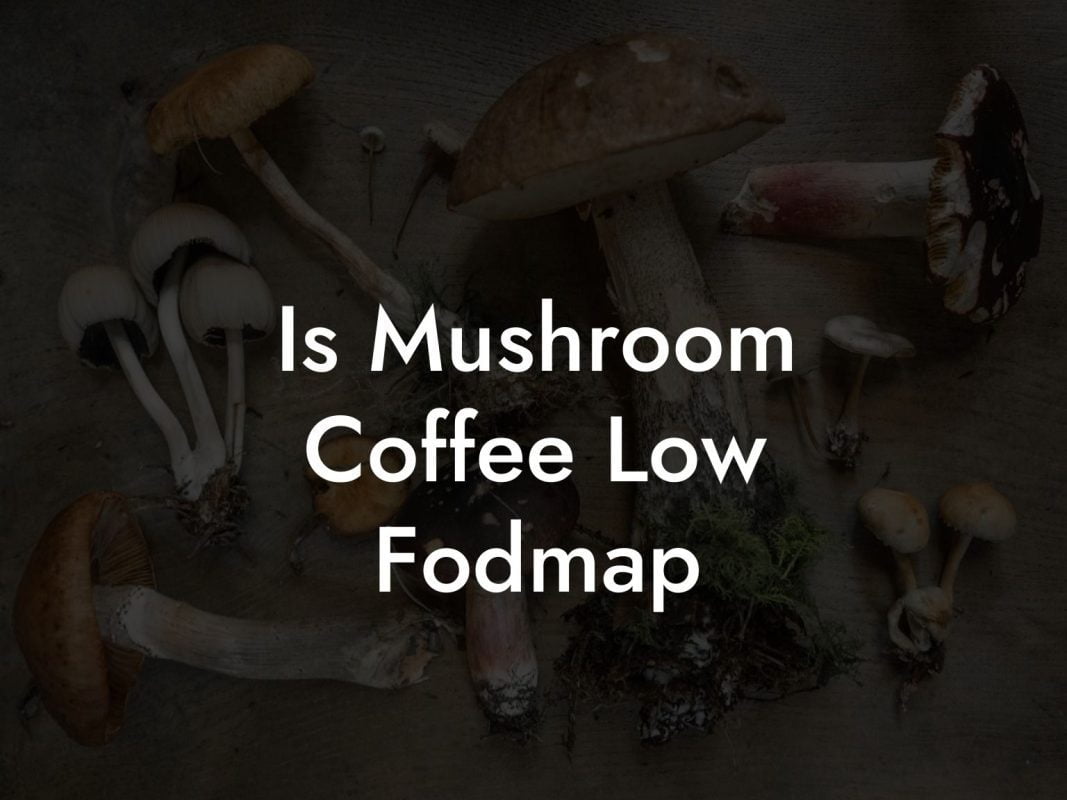Ever thought your leftover coffee could power a mini mushroom revolution? Welcome to the wonderfully wild world of Frozen Coffee Grounds Mushroom Substrate, a cutting-edge, eco-friendly twist on the art of mushroom cultivation. Whether you're a seasoned mycophile or a curious Gen-Z eco-warrior enthralled by every sustainable hack out there, keep reading to discover how your favorite frozen brew remnants can transform into a nutrient-rich bed for growing luscious mushrooms.
Quick Links to Useful Sections
- What Is Frozen Coffee Grounds Mushroom Substrate?
- Benefits of Using Coffee Grounds in Mushroom Cultivation
- Preparing and Freezing Coffee Grounds for Substrate Use
- 1. Collecting Your Coffee Grounds
- 2. Drying and Cooling
- 3. Portioning and Packaging
- 4. Freezing
- Step-by-Step Guide to Creating Your Mushroom Substrate
- Step 1: Gathering Your Ingredients
- Step 2: Thawing and Mixing
- Step 3: Moisture Adjustment
- Step 4: Pasteurization
- Step 5: Inoculation
- Step 6: Incubation
- Step 7: Fruiting Initiation
- Integrating and Customizing Your Mushroom Substrate Recipe
- Mix It Up with Supplemental Materials
- Adjust Moisture and pH Levels
- Integrating Microbial Boosters
- Troubleshooting Common Issues in Mushroom Cultivation with Frozen Coffee Grounds
- Contamination Woes
- Moisture Missteps
- Temperature Troubles
- Slow Colonization
- Environmental and Economic Benefits of Using Frozen Coffee Grounds
- Reducing Food Waste
- Cost Savings
- Promoting Circular Economies
- Energy Efficiency
- Innovative Approaches and Techniques in Modern Mushroom Farming
- Resources and Community Support: Your Next Steps
- Frequently Asked Questions: Frozen Coffee Grounds in Mushroom Cultivation
- Your Journey to a Sustainable and Savvy Mushroom Harvest
What Is Frozen Coffee Grounds Mushroom Substrate?
At its core, frozen coffee grounds mushroom substrate is a creative method of repurposing used coffee grounds, often the bane of compost piles, into the perfect base for cultivating gourmet and medicinal mushrooms. Essentially, you’re giving new life to your daily grind by freezing your used coffee grounds to maintain their freshness and nutritional potency, then mixing them with other ingredients to create an ideal growing medium.
This substrate takes advantage of the high nitrogen content and unique texture of coffee grounds, which play a critical role in the mycelial growth of mushrooms such as oyster, shiitake, and even some of the more exotic varieties. By integrating frozen, unused coffee grounds, you not only reduce waste but also enhance the overall microbial profile of your substrate, setting the stage for robust mushroom development.
Plus, freezing helps store your coffee grounds without the rapid spoilage that can occur at room temperature, preserving essential nutrients until you're ready to kickstart your mini mushroom farm. It’s a win-win for sustainability and smart indoor gardening!
Benefits of Using Coffee Grounds in Mushroom Cultivation
Coffee grounds are more than just a morning ritual’s residue, they’re a powerhouse of benefits when it comes to mushroom cultivation. Here’s how:
Looking For The Best Mushroom Coffee? You'll Love These:
- Nutrient-Rich: Packed with nitrogen and trace minerals, coffee grounds serve as an excellent organic supplement that fuels mycelial growth.
- Optimal pH Balance: The slightly acidic nature of coffee grounds creates an environment that is friendly to many mushroom species, reducing the chances of contamination.
- Cost-Effective: Instead of purchasing expensive substrates, you can recycle everyday coffee waste, cutting down on both cost and environmental impact.
- Enhanced Mycelial Colonization: The fine texture of coffee grounds increases the surface area, making it easier for mushroom mycelium to colonize swiftly and effectively.
- Sustainable and Eco-Friendly: By reusing coffee grounds, you’re contributing to a circular economy, reducing landfill waste and promoting organic farming practices.
Integrating these benefits with the practice of freezing coffee grounds ensures that the luck of your brew stays potent, a sure recipe for thriving mushrooms and happier, healthier indoor gardening.
Preparing and Freezing Coffee Grounds for Substrate Use
One of the critical steps to ensure success in this process is the proper preparation and storage of your coffee grounds. Here’s how to do it like a pro:
1. Collecting Your Coffee Grounds
Whether you’re brewing a pot at home or scooping the remnants from your local coffee shop (with permission, of course), aim to collect fresh, organic coffee grounds. Fresh grounds are ideal as they contain the maximum levels of nutrients and oils essential for mushroom growth.
2. Drying and Cooling
Before freezing, allow your coffee grounds to cool down and dry out slightly. Excess moisture can lead to unwanted bacterial growth even in the freezer. Spread them out on a clean baking sheet or tray and let them air-dry for a few hours.
3. Portioning and Packaging
Once dry, portion the grounds into airtight containers or freezer bags. This method preserves the nutrient density and protects the grounds from freezer burn. Portioning also makes it easier for you to incorporate the right amount into your substrate mixture.
4. Freezing
Pop your packaged coffee grounds into the freezer immediately. Freezing keeps the grounds in a state of nutritional stasis, effectively preserving their high nitrogen content and natural oils until you’re ready to use them.
Step-by-Step Guide to Creating Your Mushroom Substrate
Transforming frozen coffee grounds into a superb mushroom substrate is a hands-on process that combines science, sustainability, and a dash of creativity. Follow these steps for a foolproof substrate:
Step 1: Gathering Your Ingredients
The basic recipe for a robust mushroom substrate involves a mix of:
- Frozen coffee grounds (thawed to room temperature)
- Additional organic material like straw, sawdust, or coco coir
- A mild supplementary nitrogen source (optional), such as soybean hulls or bran
- Clean water to adjust moisture content to around 60%
Combining these elements creates a balanced medium where mushrooms can thrive.
Step 2: Thawing and Mixing
Remove your frozen coffee grounds from the freezer and allow them to thaw. As they defrost, combine them with your secondary substrate ingredients in a large, sanitized mixing container. Stir thoroughly to ensure your mix is homogenous.
Step 3: Moisture Adjustment
Consistency is key here. Your substrate should be moist but not waterlogged, a texture similar to a damp sponge is ideal. Use a spray bottle to add water gradually if needed, ensuring even distribution without oversaturation.
Step 4: Pasteurization
To minimize the risk of contaminating your substrate with unwanted bacteria or molds, pasteurize your mixture by heating it to around 60-80°C (140-176°F) for about 1-2 hours. This step is critical for maintaining a healthy growth environment for your mushroom mycelium.
Alternatively, some cultivators prefer cold pasteurization methods using lime or hydrogen peroxide, choose a method that best fits your available resources and expertise.
Step 5: Inoculation
Allow your substrate to cool down to room temperature after pasteurization. Next comes the fun part: inoculation. Add your chosen mushroom spawn (such as oyster or shiitake) evenly throughout the substrate. Mix gently but thoroughly to distribute the spawn without damaging the delicate mycelial threads.
Step 6: Incubation
Transfer your inoculated substrate to sterilized growth containers or bags, then seal and place them in a warm, dark area to incubate. During the incubation phase, typically lasting between 14 to 21 days, the mycelium will colonize the substrate completely.
Step 7: Fruiting Initiation
Once colonization is complete, move your substrate to a fruiting environment with increased humidity and indirect light. This change in conditions signals to the mycelium that it’s time to produce mushrooms. Keep an eye on moisture levels and maintain proper ventilation to prevent contamination.
Following these meticulous steps can yield a vibrant, productive crop of mushrooms that not only satisfies your culinary or medicinal cravings but also champions an eco-friendly approach to urban farming.
Integrating and Customizing Your Mushroom Substrate Recipe
One of the most exciting aspects of using frozen coffee grounds in your mushroom substrate is the freedom to experiment with your recipe. Just like crafting your own playlist, tweaking your substrate mixture can produce different “hits” in terms of yield and flavor. Here are some creative ideas:
Mix It Up with Supplemental Materials
While coffee grounds provide a nitrogen boost, combining them with materials that offer varying carbon sources can lead to a more balanced substrate. Experiment with coconut coir, hardwood sawdust, or rice bran to see what unique flavors and textures your mushrooms can develop.
Adjust Moisture and pH Levels
Every ingredient interacts uniquely when it comes to moisture and pH. If you find your substrate too acidic (a common scenario with coffee grounds), a pinch of lime or wood ash can help neutralize the pH. Conversely, monitor moisture levels closely, optimal hydration ensures the mycelium can spread without becoming a hotbed for contaminants.
Integrating Microbial Boosters
Some cultivators opt to add natural microbial stimulants such as beneficial bacteria or compost teas to enhance the richness of the substrate. This can create a micro-ecosystem that not only supports mushroom growth but also wards off aggressive competing fungi.
The ability to modify and personalize your substrate is a key draw for the modern, DIY mushroom cultivator. It empowers you to experiment and innovate continuously, ultimately producing mushrooms that are tailored to your taste and environmental ethics.
Troubleshooting Common Issues in Mushroom Cultivation with Frozen Coffee Grounds
As with any intricate process, challenges may arise, but savvy cultivators know that troubleshooting is part of the fun. Here are a few common issues and how to overcome them:
Contamination Woes
One of the most frequently encountered challenges is contamination by molds or bacteria. The key here is exceptional hygiene, always sanitize your tools and workspaces before handling your substrate. If contamination does appear, identify the affected areas and remove them immediately to prevent further spread.
Moisture Missteps
Too little moisture can hinder colonization, while too much may lead to bacterial growth. Achieving that perfect damp sponge consistency is vital. Invest in a good-quality spray bottle and monitor humidity levels in your growth space with a hygrometer.
Temperature Troubles
Mushrooms are finicky about their environmental conditions. A drop or spike in temperature can stall mycelial expansion. Ensure that your incubation space is stable, ideally between 21-27°C (70-80°F) for most oyster mushrooms.
Slow Colonization
If you notice slow growth, consider the quality of your inoculant or whether your substrate mix might need a bit more nitrogen. Sometimes adding a small supplement of bran or soybean flour can kickstart progress, just be cautious, as too much can lead to contamination.
Remember, every cultivation cycle is a learning curve. Use each setback as an opportunity to tweak your method and ultimately hone your process.
Environmental and Economic Benefits of Using Frozen Coffee Grounds
In today’s eco-conscious era, the benefits of repurposing coffee grounds extend far beyond the confines of your indoor mushroom farm. Here’s why adopting this innovative substrate method is a smart move for both the planet and your wallet:
Reducing Food Waste
Coffee grounds often go to waste, ending up in landfills where they contribute to methane emissions. By reclaiming these valuable resources and giving them a new purpose, you actively participate in reducing overall waste and environmental pollution.
Cost Savings
Commercial substrates can be expensive, especially if you’re experimenting with diverse mushroom varieties. By using coffee grounds that you can collect for free, you slash your production costs while also creating a nutrient-rich base that boosts yield and quality.
Promoting Circular Economies
This method embodies the principles of the circular economy: reuse, recycle, and regenerate. You turn everyday waste into a high-value product, contributing to sustainable urban agriculture and inspiring others to think outside the (coffee) cup.
Energy Efficiency
Freezing coffee grounds is a low-energy method of preservation compared to chemical preservatives or long-term composting processes. It’s an energy-efficient way to store valuable materials until they’re needed in your mushroom cultivation cycle.
By embracing this sustainable practice, you’re not only enhancing your mushroom harvest but actively supporting a healthier, more sustainable food system.
Innovative Approaches and Techniques in Modern Mushroom Farming
The world of mushroom cultivation is evolving at a rapid pace, much like your favorite social media trends. Modern cultivators are always on the lookout for cutting-edge techniques to optimize yield, improve flavor profiles, and maintain eco-friendly practices.
With frozen coffee grounds as your secret ingredient, you can experiment with advanced methods such as:
- Layering Techniques: Stack your substrate in layers, alternating between coffee grounds and other organic materials, to create a multi-dimensional growth environment.
- Bioreactor Systems: For the tech-savvy cultivator, integrating a small-scale bioreactor allows you to monitor temperature, humidity, and CO₂ levels with precision. This method takes your mushroom farming into the realm of high-tech sustainability.
- Solar Drying and Pasteurization: Combine renewable energy techniques with traditional pasteurization to maintain a green footprint while ensuring your substrate remains contamination-free.
- Community Sharing Platforms: Leverage online communities and social media groups dedicated to urban mushroom farming. Sharing your experiments and learning from others’ successes can lead to unexpected innovations.
These advanced techniques not only optimize the overall production process but also cater to the DIY spirit of the Gen-Z and millennial communities. Whether you’re an urban forager or a tech titian, the synthesis of traditional methods with modern innovation will keep your cultivation game on point.
Resources and Community Support: Your Next Steps
Venturing into mushroom farming with frozen coffee grounds isn’t just about following a recipe, it’s about joining a vibrant community of eco-innovators, urban gardeners, and mushroom enthusiasts. Here are some resources and ways to connect:
- Online Forums and Social Media Groups: Platforms like Reddit’s r/MushroomGrowing, Facebook groups dedicated to sustainable agriculture, and Instagram hashtags such as #MyceliumMagic offer endless inspiration and troubleshooting tips.
- Workshops and Webinars: Look for local gardening workshops or online webinars that dive into the nitty-gritty of mushroom cultivation. These events are a great way to learn new techniques and get real-time answers to your questions.
- Local Urban Farms and Co-ops: Get involved with local urban farming initiatives where you can gain hands-on experience, share resources, and even try your hand at collaborative cultivation projects.
- DIY Guides and Blogs: Many eco-friendly and sustainability blogs regularly feature step-by-step guides tackling topics like substrate preparation, organic pasteurization methods, and innovative cultivation techniques.
- Suppliers and Hardware Stores: Find local suppliers of high-quality mushroom spawn, organic substrates, and necessary tools to ensure your home-growing adventures run smoothly.
The journey from frozen coffee grounds to flourishing mushrooms is as much about community as it is about science. Engaging with fellow cultivators and sharing your successes (and failures) will only add layers of expertise to your evolving practice.
So go ahead, dive into this thriving community and let your passion for both mushrooms and sustainability bloom. Every shared tip and innovative idea brings you one step closer to becoming a true aficionado of the modern, eco-friendly mushroom movement.
Frequently Asked Questions: Frozen Coffee Grounds in Mushroom Cultivation
Curious about the nuances of integrating frozen coffee grounds into your mushroom substrate? Check out these frequently asked questions that shed light on common queries and concerns.
1. Why use coffee grounds in mushroom substrate?
Coffee grounds provide a nutrient-rich, nitrogen-dense medium that fosters rapid mycelial growth. Their ideal pH and fine texture also help create an environment that minimizes contamination risks.
2. How do I properly freeze coffee grounds for cultivation?
Allow your freshly used coffee grounds to cool and dry slightly, then portion them into airtight containers or freezer bags. Freeze immediately to preserve essential nutrients and maintain freshness until you're ready to use them.
3. Can I use blended substrates with coffee grounds?
Absolutely! Many cultivators mix coffee grounds with other substrates like straw, sawdust, or coco coir to create a balanced medium that enhances mushroom growth and overall yield.
4. What are the best mushroom varieties to grow on coffee grounds substrate?
Oyster mushrooms are a popular choice due to their rapid colonization and robust growth on nutrient-rich substrates. Other varieties, including shiitake and lion’s mane, can also thrive when properly supplemented.
5. How do I avoid contamination in my substrate?
Maintaining strict sterilization protocols during mixing, pasteurizing the substrate thoroughly, and ensuring proper moisture and temperature control are key steps in avoiding contamination.
6. What is pasteurization, and why is it important?
Pasteurization is a heat treatment process that reduces harmful microbes in your substrate. By carefully pasteurizing your mixture, you create a safe environment for beneficial mycelium to flourish while suppressing unwanted contaminants.
7. How long does it take for mushrooms to fruit?
After inoculation and complete colonization, mushrooms typically begin to fruit within 7 to 14 days once transferred to fruiting conditions, though this timeline can vary depending on the mushroom species and environmental factors.
8. Can I adjust the ingredients if my substrate isn’t thriving?
Yes, experimentation is key. Small adjustments like balancing moisture, pH modification with lime, or adding supplemental organic matter can often make a big difference in substrate performance.
9. Are there risks when using coffee ground substrates?
As with any organic medium, there’s always a risk of contamination. However, by practicing proper pasteurization, sterilization, and moisture control, these risks can be minimized significantly.
10. Where can I find more resources on this cultivation method?
Check out specialized urban farming communities, online forums, and sustainability blogs that regularly share tips, success stories, and advanced techniques for using recycled coffee grounds in mushroom cultivation.
Your Journey to a Sustainable and Savvy Mushroom Harvest
Embracing the art of transforming frozen coffee grounds into a premium mushroom substrate is as much about innovation as it is about sustainability. With every step you take, from meticulously freezing your coffee remnants to crafting the ideal substrate mix, you’re redefining what it means to be a modern cultivator. This process is a celebration of creativity, efficiency, and a genuine commitment to reducing waste, all while nurturing a thriving mini ecosystem right in your home.
For the eco-conscious, the experimental, and the ever-curious, this method offers a fresh take on mushroom cultivation that pairs perfectly with a vibrant, sustainable lifestyle. It’s a journey that blends scientific savvy with DIY ingenuity, empowering you to enjoy a delicious harvest that’s as good for the planet as it is for your palate.
So whether you’re embarking on this adventure to feed your inner foodie, experiment with urban agriculture, or simply repurpose what would otherwise be waste, know that you’re part of a revolutionary movement. One that transforms everyday coffee rituals into opportunities for growth, both in the form of mushrooms and personal inspiration.
Tap into your passion for sustainability, stand at the intersection of creativity and science, and let your indoor mushroom farm be a testament to what happens when green innovation meets everyday life. Your journey to a sustainable, savvy, and scrumptiously fruitful mushroom harvest starts here, and it’s bound to become your favorite part of the day.
Looking For The Best Mushroom Coffee? You'll Love These:
Useful Interruption: Dive deeper into the world of Mushroom Coffee with our most popular sections. If there is anything you think is missing or anything you would love for us to write about, just give us a shout.
- Mushroom Coffee Equipment & Product Reviews
- Mushroom Coffee Recipes & Creative Variations
- Mushroom Coffee Guides & Troubleshooting
- Mushroom Coffee Brewing & Preparation Techniques
- Model Rocket Advanced Rocketry & Innovations
- Mushroom Coffee Fundamentals
- Model Rocket Equipment Reviews & Digital Tools
- Mushroom Coffee Health Benefits & Wellness
- Mushroom Coffee Mycology & Scientific Insights
- Mushroom Coffee Community, Lifestyle & Engagement
I tried mushroom coffee this morning and told my friend, "This brew is spore-tacular!" He shot back, "Guess that's why it's such a cap-tivating way to kickstart your day!"

